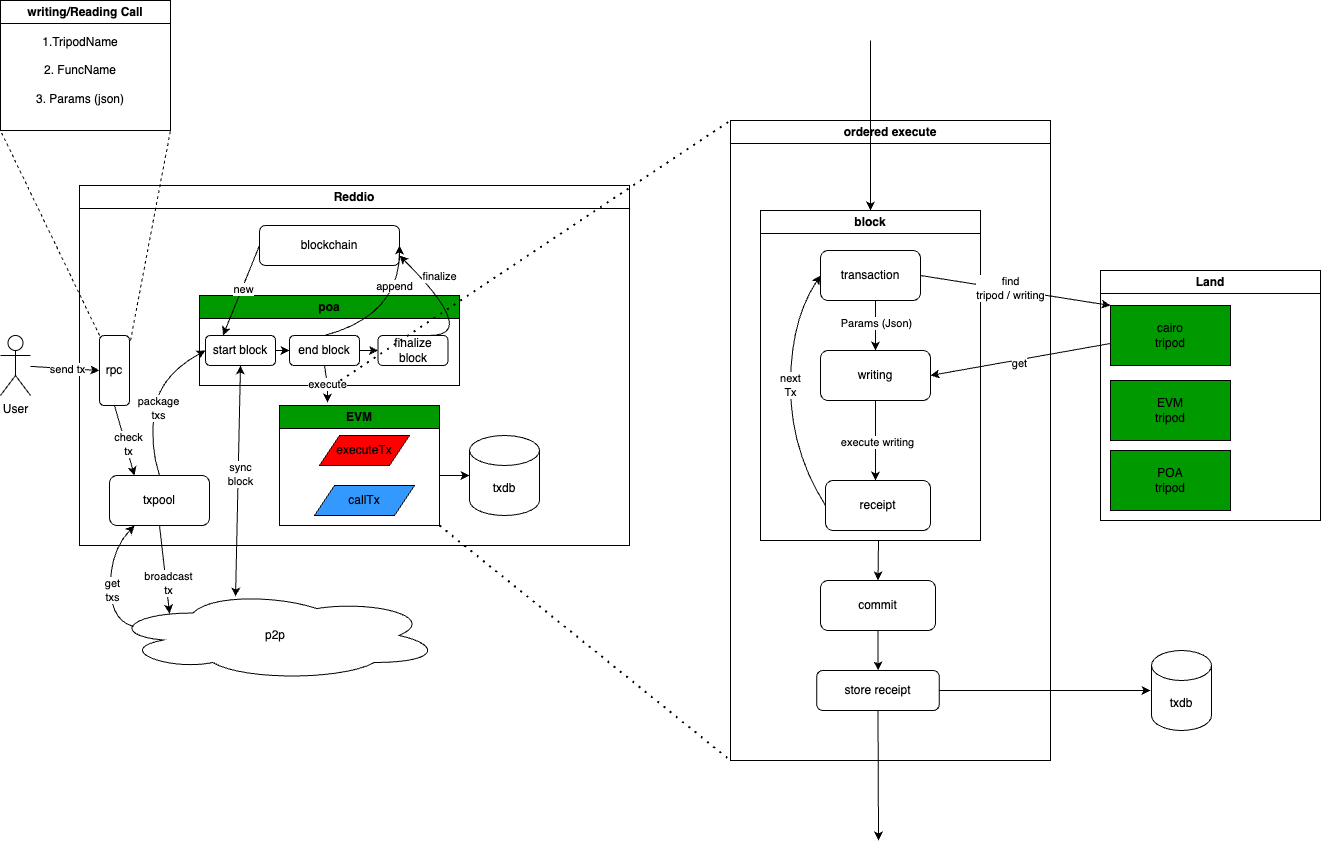Appearance
Configure Your Blockchain
We will walk you through how you can use Yu Framework configure two types of blockchain, one is EVM compatible L2, the other is Starknet compatible L2.
EVM Compatible L2
Here's how the 'EVM' tripod is configured. You can find details here.
javascript
type Solidity struct {
*tripod.Tripod
ethState *EthState
cfg *GethConfig
stateConfig *config.Config
}
func newEVM(cfg *GethConfig) *vm.EVM {
return vm.NewEVM(blockContext, txContext,
cfg.State, cfg.ChainConfig, cfg.EVMConfig)
}
func (s *Solidity) ExecuteTxn(ctx *context.WriteContext) (err error) {
txReq := new(TxRequest)
err = ctx.BindJson(txReq)
vmenv := newEVM(cfg)
vmenv.StateDB = pending_state.NewPendingState(s.ethState.stateDB)
sender := vm.AccountRef(txReq.Origin)
rules := cfg.ChainConfig.Rules(vmenv.Context.BlockNumber,
vmenv.Context.Random != nil, vmenv.Context.Time)
if txReq.Address == zeroAddress {
return executeContractCreation(txReq, ethstate, cfg,
vmenv, sender, rules)
} else {
return executeContractCall(txReq, ethstate, cfg, vmenv,
sender, rules)
}
}Next, import both the 'EVM' and 'POA' tripods into Yu's startup function:
javascript
func main() {
yuCfg := startup.InitDefaultKernelConfig()
poaCfg := poa.DefaultCfg(0)
gethCfg := evm.LoadEvmConfig(path)
StartUpChain(yuCfg, poaCfg, gethCfg)
}With that, a sequencer compatible with Solidity smart contracts is done. The overview diagram would roughly look like this:

Starknet Compatible L2
Similarly, let's take a closer look at the core logic of the "Cairo" tripod, with some details omitted for brevity, for detailed implementation, you can refer to here:
rust
type Cairo struct {
*tripod.Tripod
cairoVM vm.VM
cairoState *CairoState
}
func NewCairo(cairoVM vm.VM, cairoState *CairoState) *Cairo {
cairo := &Cairo{
Tripod: tripod.NewTripod(),
cairoVM: cairoVM,
cairoState: cairoState,
}
cairo.SetWritings(cairo.ExecuteTxn)
return cairo
}
func (c *Cairo) ExecuteTxn(ctx *context.WriteContext) error {
tx := new(TxRequest)
ctx.BindJson(tx)
receipt , err := c.cairoVM.execute(c.cairoVM, c.cairoState, tx)
if err != nil {
return err
}
ctx.EmitExtra(receipt)
}Next, import both the ‘Cairo’ and ‘POA’ tripods into Yu's startup function:
rust
func main() {
poaTripod := poa.NewPoa()
cairoTripod := cairo.NewCairo(cairoVM, cairoState)
startup.DefaultStartup(poaTripod, cairoTripod)
}With that, a sequencer compatible with Cairo contracts is easily completed.